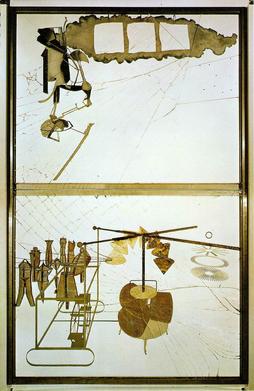Marcel Duchamp was a renowned artist who made significant contributions to the art world in the early 20th century. While he is primarily known for his association with the Dada movement and his provocative readymades, Duchamp’s interest in chess and his involvement in the game had a profound impact on his artistic practice. He is often referred to as a “chess-playing artist” due to his deep engagement with the game and its influence on his creative thinking.
Duchamp’s fascination with chess began in his youth, and he became an accomplished player over time. He participated in various chess tournaments and achieved the title of a Chess Master in 1950. Duchamp’s passion for the game went beyond mere competition; it played a crucial role in shaping his artistic philosophy and approach.
One of the notable ways chess influenced Duchamp’s art was through the concept of strategy and planning. Chess requires players to think several moves ahead, considering the potential outcomes and developing a strategic approach. Duchamp applied this mode of thinking to his artistic practice, emphasizing the importance of careful planning and conceptual depth in his works. He often employed a meticulous and calculated approach, focusing on intellectual engagement and the construction of ideas.

| The Bride Stripped Bare by Her Bachelors, Even (The Large Glass) | |
| Date: | 1915-1923 |
| Artist: | Marcel Duchamp (American (born France), 1887–1968) |
| Medium: | Oil, varnish, lead foil, lead wire, and dust on two glass panels |
Duchamp’s interest in chess also led to the exploration of the concept of time in his art. In chess, time is a critical element, and each move influences the subsequent possibilities and the overall outcome of the game. Similarly, Duchamp incorporated the element of time and temporal progression into his artworks, particularly evident in his most famous piece, “The Bride Stripped Bare by Her Bachelors, Even (The Large Glass).” This complex artwork is an intricate depiction of various mechanical and organic elements interacting over time, reflecting Duchamp’s understanding of the dynamic nature of both chess and art.
Furthermore, Duchamp’s engagement with chess challenged traditional notions of aesthetics and artistic production. His readymades, such as “Fountain” (a urinal signed with the pseudonym “R. Mutt”), questioned the conventional ideas of artistic craftsmanship and originality. Duchamp saw parallels between the strategic moves in chess and the intellectual decisions behind his readymades, as both involved a deliberate selection and placement of objects to create meaning.
In summary, Marcel Duchamp’s affinity for chess played a significant role in shaping his artistic practice. Chess influenced his approach to planning, strategy, time, and the questioning of established norms. By embracing the mindset of a chess player, Duchamp expanded the possibilities of art, challenging conventional aesthetics and paving the way for conceptual art movements that followed. His unique combination of chess and artistic creativity continues to inspire artists to think critically, strategically, and conceptually in their own works.
